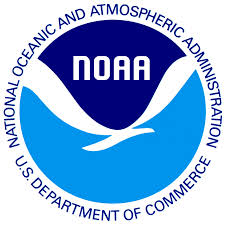NWS US Radiosonde B & C BUFR High Resolution
NWS B & C BUFR
The Binary Universal Form for the Representation of meteorological data (BUFR) is a binary data format maintained by the World Meteorological Organization (WMO). In 2015 part of the US upper air stations began to include the high resolution radiosonde measurement in their data package sent to the NCEI. These high resolution BUFR files have names as Cnnn, where nnn represents ascension number. The BUFR includes 1) metadata: station information, instrument information, balloon release information; 2) up to 1-second observations: elapsed time, level type, location displacement, pressure, height, temperature, dew point temperature, wind speed, wind direction. Time coverage is September 2015 to present, spatial coverage is US CONUS, Alaska, Hawaii, and territories.
- Cite as: National Weather Service (2021): NWS US Radiosonde B & C BUFR High Resolution.[indicate subset used]. NOAA National Centers for Environmental Information. Accessed [date].
- NCEI DSI: 6213_02
- gov.noaa.ncei:C01630
C01630
| Download Data |
|
| Distribution Formats |
|
| Ordering Instructions | Contact NCEI for other distribution options and instructions. |
| Distributor | NOAA National Centers for Environmental Information
ncei.info@noaa.gov |
| Dataset Point of Contact | Yin, Xungang
DOC/NOAA/NESDIS/NCEI > National Centers for Environmental Information, NESDIS, NOAA, U.S. Department of Commerce |
| Time Period | 2015 to Present (time interval: 12-hour) |
| Spatial Bounding Box Coordinates |
N: 72.0
S: -15.0
E: -64.0
W: 134.0
|
| Spatial Coverage Map | |
| General Documentation |
|
| Processing Documents |
|
| Publication Dates |
|
| Dataset Progress Status | Ongoing - data is continually being updated |
| Data Update Frequency | Monthly |
| Purpose | The BUFR data provides the most complete upper air observations at each site, with up to 6,000 levels as compared to about 200 levels in the low resolution data. It also contains the spatial position at each level. The BUFR data enable us to study detailed upper air structure in both time and space. The data set has been highly demanded by researchers. |
| Dataset Citation |
|
| Cited Authors |
|
| Originators |
|
| Publishers |
|
| Theme keywords | Global Change Master Directory (GCMD) Science Keywords
|
| Data Center keywords | Global Change Master Directory (GCMD) Data Center Keywords
|
| Instrument keywords | Global Change Master Directory (GCMD) Instrument Keywords
|
| Place keywords | Global Change Master Directory (GCMD) Location Keywords
|
| Stratum keywords | Global Change Master Directory (GCMD) Location Keywords
|
| Use Constraints |
|
| Access Constraints |
|
| Fees |
|
| Lineage Statement | Data are created from the NWS managed upper air stations. Data are transmitted to NCEI in near-real time or monthly. |
| Processor |
|
| Processing Steps |
|
| Processing Environment | BUFR data are created at observation sites by software developed by radiosonde instrument providers. Data files are then transmitted to NCEI and ingested by NCEI ingest system on Linux OS. |
| Processing Documents |
|
| Source Datasets |
|
| Processing Steps |
|
Last Modified: 2023-06-23
For questions about the information on this page, please email: ncei.info@noaa.gov
